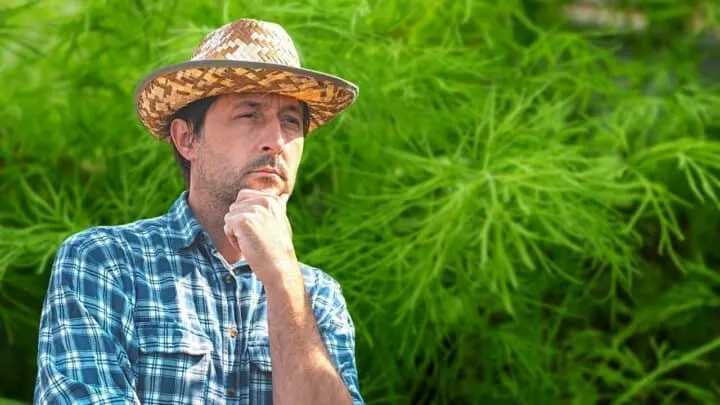Dill is a favorite herb for many gardeners since it grows and spreads very easily. It is used widely in kitchen gardens to provide a garnish for summer salads or egg based dishes.
The majority of users will however probably buy the dried form from a local supermarket in a glass jar.
However, if you wish to grow dill yourself at home then you will likely want to know how to harvest it without hurting the mother plant.
Here we will find out just how to do that by teaching you how to harvest your dill in a way that allows for a year-round supply without actually hurting the plant.
Table of Contents
How to harvest dill without killing the plant?
Never harvest more than one-third of the plant at a time and use scissors – not a knife – to avoid damage to the stems of the main structure. Water thoroughly before you harvest and prune the plant well before it flowers to prevent it from dying back.
1. Keep an eye on the growth
When harvesting your dill you will do well to take the oldest leaves first. Generally, as soon as they reach around 6 inches in height they are ready for harvesting.
Do not pick newer parts of the plant in favor of old ones. Stick to harvesting from the outer leaves. Take them first!
2. Water the plant before harvesting
Ideally you should give the plant a good drink in the days leading up to the harvest. This will give them a good base from which to recover after you snip some off.
3. Harvest in small batches
Do not take more than around a third of the plant. You need to leave enough so that the remainder can continue to grow well. This will give it more chance to produce more herb for you, and you will be able to harvest continually throughout the year.
4. Prune your dill plant before it flowers
If you let your dill plant flower then it tends to put a lot of energy in to the whole process. This can cause the actual crop to lose flavor on the leaves and wilt.
Pruning your plant before any flowers come will help not only keep the flavor of the crop but also keep it healthy.
If you leave your dill alone to go on to flower and produce seeds it will be subject to something known as “bolting”. In this case, it will produce seeds and then die back. Once this happens, it is hard to keep it at its best, so prune before any sign of blooming.
For a healthy crop of dill, you do not want the plant to actually flower, as this will set the whole thing in to a decline. If this happens, the plant will die back and you will need to wait for a year before you can harvest it again!
5. Do not use knives
A sharp knife may be recommended to prune other plants, but for the dill this can actually cause extensive damage. Sawing a knife back and forth on the stems will rip and disturb them. Better to snap off with your hands or better still use a clean pair of scissors.
The best place to cut will be at the stem where the leaf joins the main plant. If you see any sign of flowering, cut the flower off immediately to avoid the plant going to seed.
6. Do not harvest too soon
Leave the plant enough time to establish itself – at least eight weeks of growth should be sufficient.
Frequently Asked Questions about how to harvest dill without killing the plant
What is the best tool to use to harvest dill to avoid damaging it?
You should use a clean pair of scissors in order to harvest your dill crop. Try not to use knives – the sawing motion will likely cause damage to the plant
When can you first harvest a dill plant?
You should leave a dill plant to grow for at least 8 weeks before you perform the first harvest. Generally, dill can be harvested at any time but right before flowering is thought to give the best flavor.
Conclusion
Add a touch of dill to a salad for a great taste – it’s even more satisfying when you have grown it yourself.

Daniel has been a plant enthusiast for over 20 years. He owns hundreds of houseplants and prepares for the chili growing seasons yearly with great anticipation. His favorite plants are plant species in the Araceae family, such as Monstera, Philodendron, and Anthurium. He also loves gardening and is growing hot peppers, tomatoes, and many more vegetables.


